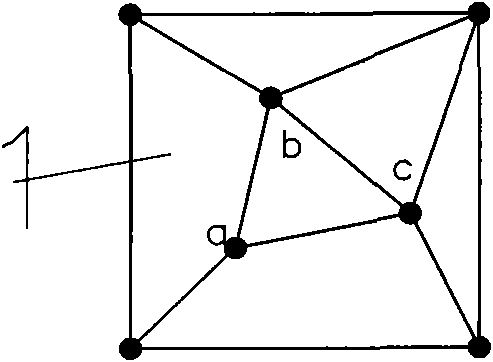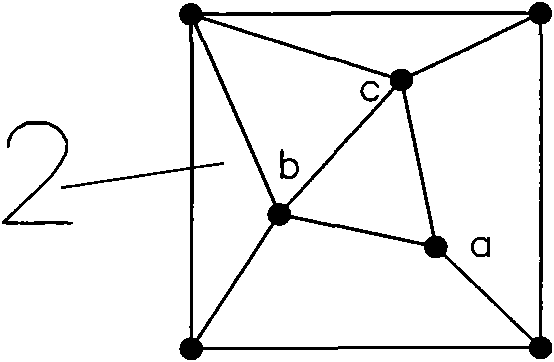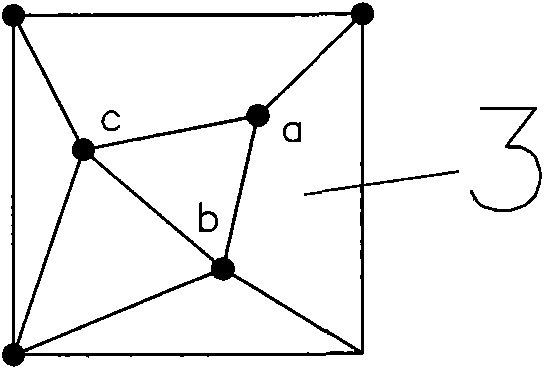Polygonal image digitizing method utilizing rotating TIN (triangulated irregular network)
A polygon and image technology, applied in image data processing, image coding, instruments, etc., can solve the problems of unfavorable coordination between pixels, and achieve the effects of easy program control, simple algorithm, and convenient network construction
- Summary
- Abstract
- Description
- Claims
- Application Information
AI Technical Summary
Problems solved by technology
Method used
Image
Examples
specific Embodiment approach 1
[0009] Specific implementation mode one: the following combination Figure 1 to Figure 6 This embodiment will be specifically described. This embodiment includes the following steps: 1. Taking 30mm as the side length of the basic square; 2. Arranging one control point at each of the four vertices of the basic square, and distributing three control points in the basic square, see schematic diagram figure 1 , the plane coordinates of the four vertices are (0, 0), (30, 0), (30, 30) and (0, 30), point a is (9, 9), point b is (12, 22.5) , point c is (24, 12), the above-mentioned three points a, b, c are connected to form a triangle, and the above-mentioned three internal control points are connected to form a triangle, and then a vertex is selected from the four vertices of the basic square, and the distance between the vertex and The sum of the distances between the two vertices of the adjacent inner triangles is the smallest, connect the selected control points at the vertices o...
specific Embodiment approach 2
[0010] Embodiment 2: The difference between this embodiment and Embodiment 1 is that step A is also included between step 4 and step 5, and the length or width direction of the supporting unit is scaled to make it a rectangle, and the positions of all control points inside Adjust to scale. Other steps are still the same as the original implementation.
PUM
 Login to View More
Login to View More Abstract
Description
Claims
Application Information
 Login to View More
Login to View More - R&D
- Intellectual Property
- Life Sciences
- Materials
- Tech Scout
- Unparalleled Data Quality
- Higher Quality Content
- 60% Fewer Hallucinations
Browse by: Latest US Patents, China's latest patents, Technical Efficacy Thesaurus, Application Domain, Technology Topic, Popular Technical Reports.
© 2025 PatSnap. All rights reserved.Legal|Privacy policy|Modern Slavery Act Transparency Statement|Sitemap|About US| Contact US: help@patsnap.com



